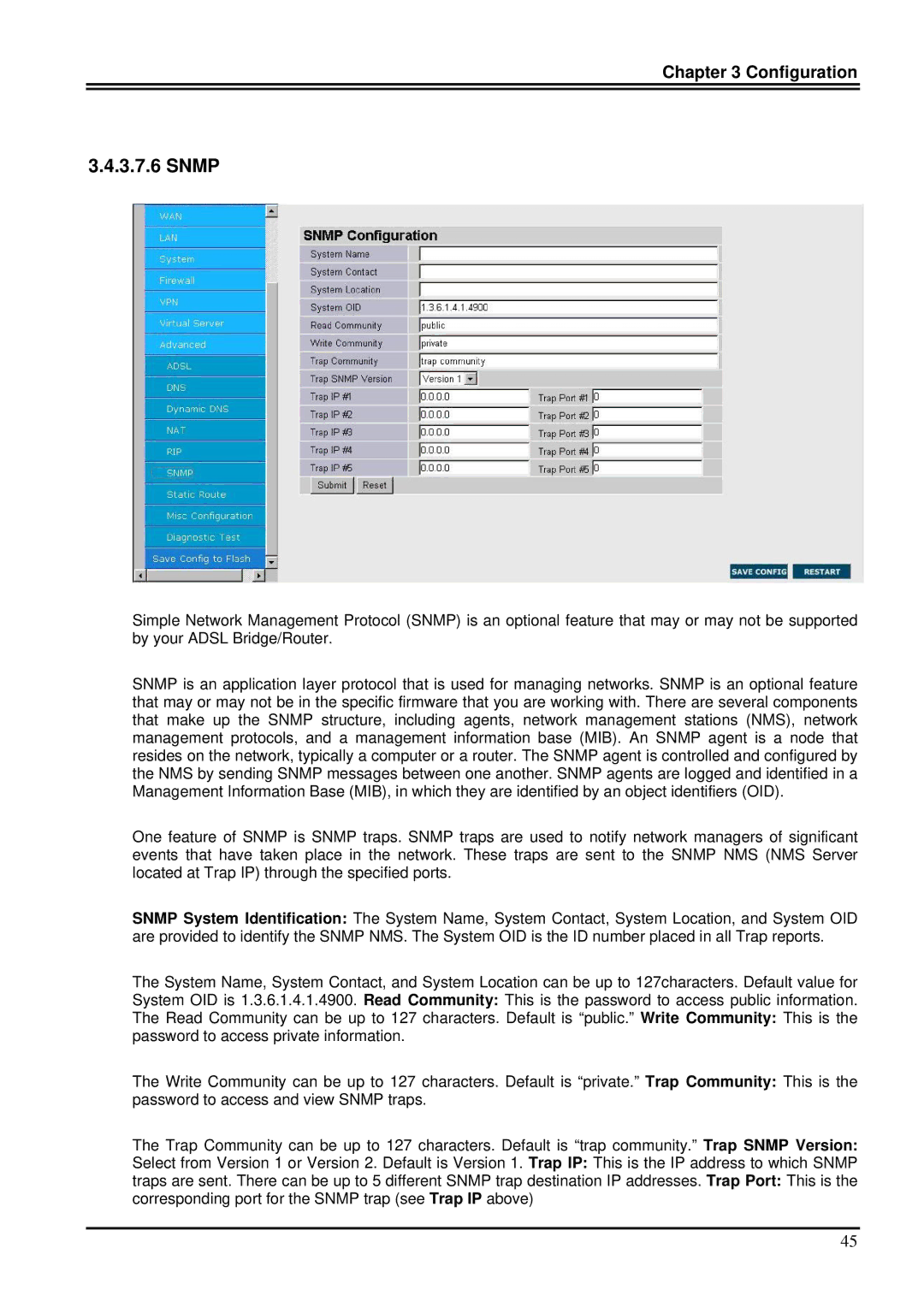
Chapter 3 Configuration
3.4.3.7.6 SNMP
Simple Network Management Protocol (SNMP) is an optional feature that may or may not be supported by your ADSL Bridge/Router.
SNMP is an application layer protocol that is used for managing networks. SNMP is an optional feature that may or may not be in the specific firmware that you are working with. There are several components that make up the SNMP structure, including agents, network management stations (NMS), network management protocols, and a management information base (MIB). An SNMP agent is a node that resides on the network, typically a computer or a router. The SNMP agent is controlled and configured by the NMS by sending SNMP messages between one another. SNMP agents are logged and identified in a Management Information Base (MIB), in which they are identified by an object identifiers (OID).
One feature of SNMP is SNMP traps. SNMP traps are used to notify network managers of significant events that have taken place in the network. These traps are sent to the SNMP NMS (NMS Server located at Trap IP) through the specified ports.
SNMP System Identification: The System Name, System Contact, System Location, and System OID are provided to identify the SNMP NMS. The System OID is the ID number placed in all Trap reports.
The System Name, System Contact, and System Location can be up to 127characters. Default value for System OID is 1.3.6.1.4.1.4900. Read Community: This is the password to access public information. The Read Community can be up to 127 characters. Default is “public.” Write Community: This is the password to access private information.
The Write Community can be up to 127 characters. Default is “private.” Trap Community: This is the password to access and view SNMP traps.
The Trap Community can be up to 127 characters. Default is “trap community.” Trap SNMP Version: Select from Version 1 or Version 2. Default is Version 1. Trap IP: This is the IP address to which SNMP traps are sent. There can be up to 5 different SNMP trap destination IP addresses. Trap Port: This is the corresponding port for the SNMP trap (see Trap IP above)
45
